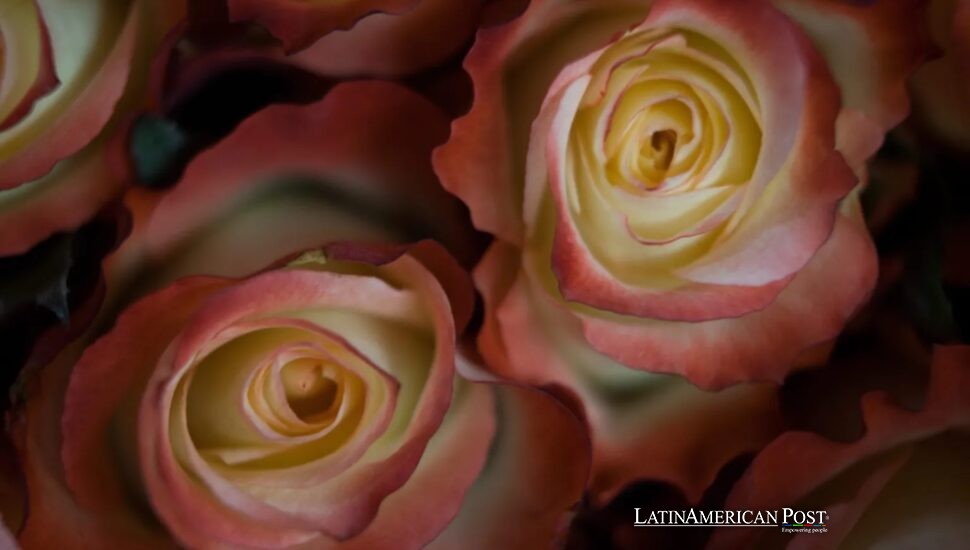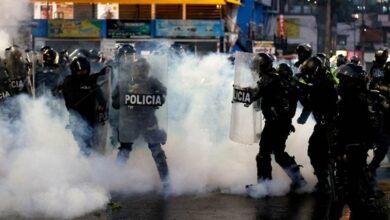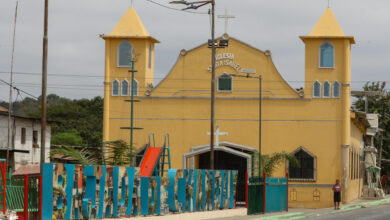Ecuador’s Blooming Roses Enchant Mother’s Day Buyers Globally

Amid Ecuador’s majestic Andean peaks, vibrant roses flourish under meticulous care, crossing continents to celebrate Mother’s Day worldwide. While growers capitalize on the equatorial sun and advanced greenhouse technology, they also confront trade challenges and shifting global demands in stride.
Harnessing the Power of the Equatorial Sun
Ecuadorian rose growers address difficult climate conditions in the Andes by converting them to advantages. They employ plentiful sunlight, and retractable greenhouse roofs regulate temperature, creating conditions close to perfect for growing flowers. Beneath the characteristic chill of the highlands, a warm, humid greenhouse environment emerges—where humidity can reach up to 100% in some areas—helping roses thrive in ways that few other regions of the world can match.
These greenhouses often feature double layers of plastic to maintain stable interior conditions. Automatic watering systems water and mist plants. Thousands of plants grow consistently each year. Roses receive the most care. People all over appreciate roses for their size and bright color.
A big part of Ecuador’s success comes from its location. The Andes provide extra light intensity, with the equator slicing through the country, while moderate temperatures allow year-round cultivation. Growers explain that the result is a rose with a larger bud and deeper color—a sought-after characteristic in international markets. From soft pastels to fiery reds, each Ecuadorian rose is, in essence, a product of altitude, light, and meticulous care.
According to data from the country’s floriculture sector, Ecuador ranks as the world’s third-largest flower exporter, trailing only the Netherlands and Colombia. In 2024 alone, Ecuador sent fresh flowers worth over 1 billion dollars to global destinations, with the United States absorbing nearly half of that total. About 30% went to the European Union (EU), 14% to Russia, and the remainder to smaller markets across Asia and beyond.
These impressive export figures are made possible by the precision and diligence of growers and workers. Standing amid rows of vibrant plants, a 34-year-old mother of four, María Paguay, carefully places new seedlings in neat lines. “There’s a lot of responsibility,” she explains to EFE, “because each little plant we tend today might become a rose that travels across the world to make someone’s day special.”
Trade Tariffs and New Horizons
Despite the rosy outlook, Ecuadorian flower exporters have felt the pinch of international trade policies. In particular, the United States—a key market for these blooms—has implemented new tariffs that compound existing ones. Under the administration of former U.S. President Donald Trump, an additional 10% tariff was imposed on certain flower imports, adding to an existing 6.8%.
Even so, Alejandro Martínez, the chief executive of Ecuador’s leading flower export association, Expoflores, remained optimistic when speaking to EFE. “For now, this tariff is having minimal impact,” he said, citing a fortunate interplay of global flower supply and demand. “There’s less production than demand in Ecuador and Colombia, our main competitor,” he noted, explaining that a short supply in other major flower-exporting nations has helped Ecuador maintain strong sales.
Martínez did warn that the tariff could have a noticeable effect during the summer months when production levels typically rise. However, he expressed confidence that “Ecuador is doing its homework to remove these surcharges by September.” He estimated that the overall impact of the tariff might represent a 1–2% drop in total export value, not volume. Martínez estimated sales will reach around 1.1 billion dollars this year despite difficulties. His projection supports a broader change in culture where consumers buy flowers, not just for major holidays like Valentine’s Day and Mother’s Day.
Another part of his forecast is a 3 – 4 % increase in export volume by year’s end. This increase will raise annual flower exports from about 245,000 metric tons to 257,000. The growth shows that Ecuador’s floral industry is able to recover, even with economic and political problems.
Ecuador’s exporters often focus on roses as their star product, with 380 varieties grown across different altitudes and regions of the Andes. Roses account for over 70% of the nation’s flower exports, and these blooms’ extraordinary brightness and size help them stand out in competitive global markets. Growers’ ability to manage many varieties simultaneously has allowed Ecuador to make a place for itself. That place involves the production of flowers that are of high quality and visually attractive, available every month of the year.
The transportation of the product is also important. About 96 % of flowers from Ecuador travel by airplane. Freight companies and cargo airlines work closely with growers to ensure roses remain at temperatures between 2° and 8°C, preserving freshness for up to two weeks after harvest. The remaining 4% goes by sea, primarily to neighboring Chile, although maritime shipping of flowers is challenging due to the large volume required per container.
Beyond Mother’s Day: A Blossoming Industry
While Mother’s Day and Valentine’s Day often garner headlines as peak periods for flower sales, Ecuador’s floriculture sector is expanding beyond these seasonal spikes. “We’re seeing that year-round demand for high-quality roses is on the rise,” said Eduardo Chiriboga, commercial manager of Esmeralda Farms, in an interview with EFE. “From the time we plant a rose to the first harvest, it takes about seven months, and afterward, each rose plant yields a new stem approximately every three months.”
In 2024, Avianca Cargo, a Colombian airline specializing in floral freight, transported about 400 million flower stems from Colombia and Ecuador combined, abiding by strict cold-chain protocols to prevent wilting. “Timing and temperature control are everything,” Avianca Cargo’s regional sales manager, Catalina Pérez, told EFE. “Even a brief lapse can affect the quality of the blooms upon arrival.”
From Quito’s Mariscal Sucre International Airport alone, an estimated 300,000 metric tons of exports were shipped out in 2024—92% of which were flowers, according to the airport’s administrator, Corporación Quiport. “Our infrastructure has adapted to manage large volumes of delicate cargo, especially roses,” said Quiport’s director general, Ramiro Miró, speaking with EFE.
Even with impressive numbers and logistical success, a bigger narrative becomes apparent. The floriculture industry accounts for 1 % of Ecuador’s GDP and 11 % of the agricultural GDP. Around 120,000 people work in this sector, a substantial number of whom are women who often provide most of the income for their families. Their dedication and skilled labor support their immediate families and entire communities in the Andean highlands.
“Every rose we grow here carries our effort and pride,” Paguay reflected, gazing across rows of plants soon to be cut, packed, and loaded onto refrigerated trucks destined for the airport. For the millions of mothers—indeed, for anyone receiving an Ecuadorian rose—the gift is more than a burst of color and fragrance. It is a small testament to the labor, technology, and natural wonder that converge in Ecuador’s high-altitude fields.
Also Read: Colombian Emerald Trade Faces a Heavy Environmental Reckoning
In the end, each bloom represents a message of gratitude, love, and optimism, traveling thousands of miles from the equatorial sun to doorsteps around the globe. “We face hurdles, but we keep going,” Martínez concluded, sharing his thoughts with EFE. “As long as there is someone, somewhere, who appreciates the beauty of a rose, Ecuador will continue to grow, adapt, and send out these petals of hope.”




